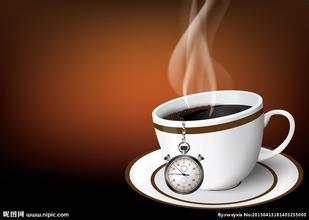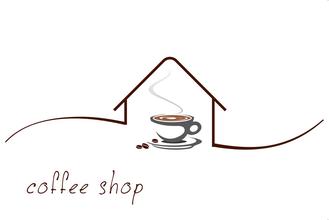Introduction to the taste characteristics of Puerto Rican coffee boutique coffee manor with complete flavor and strong fragrance
The main island is slightly rectangular, 160 kilometers from east to west and 55 kilometers from north to south. The whole island is composed of mountains and hills. The terrain descends from the middle to the south and north. Its main ridge is an extension of the Central Cordillera Mountains in Central Dominica, consisting of the east-west Central Mountains and the Lucillo Mountains, with an average elevation of 900m and the highest peak, Mount Ponta, of 1338 meters. The western side of the central mountain is a hilly area, which is mostly composed of limestone and develops karst landforms. The south and north coasts are narrow plains. Located near 18 °north latitude, it belongs to tropical oceanic climate. The annual average temperature in coastal plain is 25 ℃, and that in mountainous area is about 20 ℃. The north faces the northeast trade wind, the annual precipitation is more than 1500 mm; the south leeward, less than 1000 mm; May to November is the rainy season. The central mountain area is rich in precipitation, covered with tropical forests; the northern region has fertile land and superior water and thermal conditions, which is suitable for agricultural development; the south is relatively dry, mainly animal husbandry, and the status of agriculture that needs irrigation has declined. Agricultural output accounted for only 2.1% of GDP in 1981 and 1982. The area of cultivated land accounts for 15.7% of the total island area, grassland accounts for 37.9%, and forest accounts for 20.1%. The main agricultural products are sugar cane, tobacco and tropical fruits. In 1980, the sown area of sugarcane was 41000 hectares and produced 2 million tons of sugarcane. The rice planting industry developed after the second World War, but the output was very low and the grain depended on imports. The northern coastal plain mainly produces sugar cane and pineapple, while the hilly land mainly produces coffee, bananas and tobacco. The southern coastal plains produce tropical fruits, sugar cane and animal husbandry. Near the sea is rich in aquatic products, the fishery is developing rapidly, and a modern fishery base has been established in Fajardo and other places on the east coast.
The island has a pleasant climate, good sightseeing and transportation facilities, and developed tourism. In 1981, the number of foreign tourists reached 1.56 million, mostly from the United States, with an annual income of 682 million US dollars, equivalent to more than twice the agricultural output value of that year. After the Spanish-American War in 1898, it became an American colony. It became a "free federation" of the United States in 1952 and exercised self-government. The economy is mainly industrial, with textile, sugar, electrical and electronic equipment, petrochemistry, cement, wine-making and other industries. Agriculture mainly produces sugar cane, coffee, tobacco, fruit, etc., and cannot be self-sufficient in grain. The main exports are petroleum products, clothing, fish, tobacco and sugar, while oil, electrical appliances, machinery, vehicles and food are imported. The main trade partner is the United States. Tourism is developing rapidly and is one of the important sources of foreign exchange. The traffic is mainly by roads, with American military bases.
And Jaime Fortuno, the president of Escoki's Escogido Yauco agency, pays silent attention to all this work every year, even the smallest details. Fortuno is an investment banker who graduated from Harvard Business School. He was determined to seize every opportunity to open up a market for top coffee in Puerto Rico. He expects a maximum annual output of 3000 bags of 45kg each, less than 1 per cent of the island's total coffee production.
This is why Puerto Rico and Puerto Rico Yukot select Yauco Selecto, which is the manor bean, the joint brand of Puerto Rico San Pedro, Caracolillo and La Juanita.
Island Coffee-Puerto Rico
In fact, any kind of coffee will be given a unique flavor because of its origin, just like different music styles will always give you different feelings. Puerto Rico Yaoke coffee has the characteristics of boutique coffee, its acidity is very stable, full of particles, complete flavor, rich aroma. The reason why Yaocote chose coffee beans to be better than other producing areas on the island is that it is grown in high-altitude mountain areas, so it grows slowly and has rich fruit flavor, and it uses ancient coffee tree species, which have a unique flavor despite less yield. this is incomparable to some new tree species. Due to the abundant rainfall, rich soil and high-altitude microclimate zone, Yaoke coffee has all the qualities that gourmet coffee should have. Of course, Yaoke coffee is inseparable from the hard work of those coffee workers, who manage the whole process from planting coffee seedlings to post-harvest treatment.
And each kind of coffee has its own unique taste, when you taste Yaoke coffee, you will feel the unique acidic taste of Central American coffee, which is the most characteristic taste of Caribbean island coffee, so some people compare Yaoke coffee to the coffee with the most attractive tongue.

Important Notice :
前街咖啡 FrontStreet Coffee has moved to new addredd:
FrontStreet Coffee Address: 315,Donghua East Road,GuangZhou
Tel:020 38364473
- Prev

Introduction to the Flavor and Taste of High-quality Coffee in Dominica Coffee Manor
In 1677, about 4,000 French lived in 11 villages in the west of the island. In 1697, France and Spain ceded the western part of the island to France according to the Leswick Treaty of the Alliance War, formally recognizing French sovereignty over Haiti in the western part of the Spanish island, and the eastern part of the Spanish island was called East Santo Domingo. France continues to develop its agricultural economy on the island of Hispaniola.
- Next

Introduction to the flavor and taste characteristics of Ecuadorian coffee manor with a very balanced and refreshing taste
The minerals are mainly oil, mainly distributed in Guayaquil Bay, and oil fields are also found in the Amazon Plain. Gold and silver are distributed in Machaki and Saluma and other places. Copper is made in Machaki. There are sulfur mines in the Cologne Islands. In addition, there is iron, lead and so on. The forest area accounts for about 68% of the country's area, mostly in the eastern region, rich in valuable wood, such as mahogany and ointment.
Related
- Detailed explanation of Jadeite planting Land in Panamanian Jadeite Manor introduction to the grading system of Jadeite competitive bidding, Red bid, Green bid and Rose Summer
- Story of Coffee planting in Brenka region of Costa Rica Stonehenge Manor anaerobic heavy honey treatment of flavor mouth
- What's on the barrel of Blue Mountain Coffee beans?
- Can American coffee also pull flowers? How to use hot American style to pull out a good-looking pattern?
- Can you make a cold extract with coffee beans? What is the right proportion for cold-extracted coffee formula?
- Indonesian PWN Gold Mandrine Coffee Origin Features Flavor How to Chong? Mandolin coffee is American.
- A brief introduction to the flavor characteristics of Brazilian yellow bourbon coffee beans
- What is the effect of different water quality on the flavor of cold-extracted coffee? What kind of water is best for brewing coffee?
- Why do you think of Rose Summer whenever you mention Panamanian coffee?
- Introduction to the characteristics of authentic blue mountain coffee bean producing areas? What is the CIB Coffee Authority in Jamaica?

